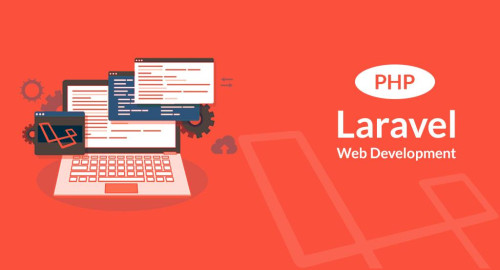In this tutorial, we will see laravel 8 ajax crud with yajra datatable. I will show you how to create ajax crud operations in laravel 8. In laravel 8 ajax crud operation, we can perform without page refresh. You don't want to page reload when you insert, update, delete data then you should use ajax call in your laravel 8.
Also, we can use yajra datatable to perform an ajax crud operation in laravel 8 or crud operation in laravel 8 using ajax. you can also perform laravel 8 ajax crud with a modal popup. Follow the jquery data table ajax crud example tutorial step by step and get output.
So, let's start the crud operation in laravel 8 using ajax.
Step 1 : Create Laravel 8 Project
Step 2 : Setup Database
Step 3 : Add/Create Migration Table
Step 4 : Install yajra/laravel-datatables package.
Step 5 : Add Resource Route
Step 6 : Add Controller and Model
Step 7 : Add Blade Files
Type the following command in the terminal and create a fresh laravel 8 project.
composer create-project --prefer-dist laravel/laravel blogIn the second step, we will configure a database. for example database name, username, password, etc, So, open the .env file and add all details like as below.
DB_CONNECTION=mysql
DB_HOST=127.0.0.1
DB_PORT=3306
DB_DATABASE=database name(blog)
DB_USERNAME=database username(root)
DB_PASSWORD=database password(NULL)We are creating an ajax crud example for posts. So first, we have to create migration for the "posts" table using laravel php artisan command. So, the first type below command:
php artisan make:migration create_posts_table --create=postsAfter running this command you will find a PHP file here location "database/migrations/" in this file you need to add the below code.
<?php
use Illuminate\Support\Facades\Schema;
use Illuminate\Database\Schema\Blueprint;
use Illuminate\Database\Migrations\Migration;
class CreatePostsTable extends Migration {
/**
* Run the migrations.
*
* @return void */
public function up()
{
Schema::create('posts', function (Blueprint $table) {
$table->bigIncrements('id');
$table->string('title')->nullable();
$table->longText('description')->nullable();
$table->timestamps();
});
}
/**
* Reverse the migrations.
*
* @return void
*/
public function down()
{
Schema::dropIfExists('posts');
}
}after this, we need to run this migration by the following command in our terminal.
php artisan migrateNow, we need to install yajra/laravel-datatables in our project. So, just run below the following command in your terminal.
composer require yajra/laravel-datatables-oracleAfter completing the step above, use the following command to publish configuration & assets:
php artisan vendor:publish --tag=datatablesNow, Add Resource route in Routes/web.php
use Illuminate\Support\Facades\Route;
use App\Http\Controllers\PostAjaxController;
Route::resource('ajaxposts', PostAjaxController::class);create the PostAjaxController using the following command.
php artisan make:controller PostAjaxController --resource --model=PostNow make changes in the model, you will find the model in this path app/Models/Post.php and add the below code in post.php
<?php
namespace App\Models;
use Illuminate\Database\Eloquent\Model;
class Post extends Model
{
protected $fillable = [
'id', 'title', 'description'
];
}After changes in the model you will find PostAjaxController.php in this path app/Http/Controllers/PostAjaxController.php.
So, copy the below code and paste it to your controller.
<?php
namespace App\Http\Controllers;
use App\Models\Post;
use Illuminate\Http\Request;
use DataTables;
class PostAjaxController extends Controller
{
/**
* Display a listing of the resource.
*
* @return \Illuminate\Http\Response
*/
public function index(Request $request)
{
if ($request->ajax()) {
$post = Post::latest()->get();
return Datatables::of($post)
->addIndexColumn()
->addColumn('action', function($row){
$btn = '<a href="javascript:void(0)" data-toggle="tooltip" data-id="'.$row->id.'" data-original-title="Edit" class="edit btn btn-primary btn-sm editPost">Edit</a>';
$btn = $btn.' <a href="javascript:void(0)" data-toggle="tooltip" data-id="'.$row->id.'" data-original-title="Delete" class="btn btn-danger btn-sm deletePost">Delete</a>';
return $btn;
})
->rawColumns(['action'])
->make(true);
}
return view('postAjax',compact('post'));
}
/**
* Store a newly created resource in storage.
*
* @param \Illuminate\Http\Request $request
* @return \Illuminate\Http\Response
*/
public function store(Request $request)
{
Post::updateOrCreate(['id' => $request->id],
['title' => $request->title, 'description' => $request->description]);
return response()->json(['success'=>'Post saved successfully.']);
}
/**
* Show the form for editing the specified resource.
*
* @param \App\Post
* @return \Illuminate\Http\Response
*/
public function edit($id)
{
$post = Post::find($id);
return response()->json($post);
}
/**
* Remove the specified resource from storage.
*
* @param \App\Post
* @return \Illuminate\Http\Response
*/
public function destroy($id)
{
Post::find($id)->delete();
return response()->json(['success'=>'Post deleted successfully.']);
}
}In this step, we will create a blade file for this example. So, create postAjax.blade.php in this path resources/views/postAjax.blade.php
<!DOCTYPE html>
<html>
<head>
<title>Laravel 8 Ajax CRUD With Yajra Datatable - www.websolutionstuff.com</title>
<meta name="csrf-token" content="{{ csrf_token() }}">
<script src="https://cdnjs.cloudflare.com/ajax/libs/jquery-validate/1.19.0/jquery.validate.js"></script>
<link href="https://cdn.datatables.net/1.10.19/css/dataTables.bootstrap4.min.css" rel="stylesheet">
<script src="https://cdn.datatables.net/1.10.16/js/jquery.dataTables.min.js"></script>
<script src="https://stackpath.bootstrapcdn.com/bootstrap/4.1.3/js/bootstrap.min.js"></script>
<link rel="stylesheet" href="https://cdnjs.cloudflare.com/ajax/libs/twitter-bootstrap/4.1.3/css/bootstrap.min.css" />
<link href="https://cdn.datatables.net/1.10.16/css/jquery.dataTables.min.css" rel="stylesheet">
<script src="https://cdn.datatables.net/1.10.19/js/dataTables.bootstrap4.min.js"></script>
<script src="https://ajax.googleapis.com/ajax/libs/jquery/1.9.1/jquery.js"></script>
</head>
<body>
<div class="container">
<h1>Laravel 8 Ajax CRUD With Yajra Datatable - www.websolutionstuff.com</h1>
<a class="btn btn-info" href="javascript:void(0)" id="createNewPost"> Add New Post</a>
<table class="table table-bordered data-table">
<thead>
<tr>
<th>No</th>
<th>Title</th>
<th>Description</th>
<th width="280px">Action</th>
</tr>
</thead>
<tbody>
</tbody>
</table>
</div>
<div class="modal fade" id="ajaxModelexa" aria-hidden="true">
<div class="modal-dialog">
<div class="modal-content">
<div class="modal-header">
<h4 class="modal-title" id="modelHeading"></h4>
</div>
<div class="modal-body">
<form id="postForm" name="postForm" class="form-horizontal">
<input type="hidden" name="id" id="id">
<div class="form-group">
<label for="title" class="col-sm-2 control-label">Title</label>
<div class="col-sm-12">
<input type="text" class="form-control" id="title" name="title" placeholder="Enter Name" value="" required>
</div>
</div>
<div class="form-group">
<label class="col-sm-2 control-label">Description</label>
<div class="col-sm-12">
<textarea id="description" name="description" required placeholder="Enter Description" class="form-control"></textarea>
</div>
</div>
<div class="col-sm-offset-2 col-sm-10">
<button type="submit" class="btn btn-primary" id="savedata" value="create">Save Post
</button>
</div>
</form>
</div>
</div>
</div>
</div>
</body>
<script type="text/javascript">
$(function () {
$.ajaxSetup({
headers: {
'X-CSRF-TOKEN': $('meta[name="csrf-token"]').attr('content')
}
});
var table = $('.data-table').DataTable({
processing: true,
serverSide: true,
ajax: "{{ route('ajaxposts.index') }}",
columns: [
{data: 'DT_RowIndex', name: 'DT_RowIndex'},
{data: 'title', name: 'title'},
{data: 'description', name: 'description'},
{data: 'action', name: 'action', orderable: false, searchable: false},
]
});
$('#createNewPost').click(function () {
$('#savedata').val("create-post");
$('#id').val('');
$('#postForm').trigger("reset");
$('#modelHeading').html("Create New Post");
$('#ajaxModelexa').modal('show');
});
$('body').on('click', '.editPost', function () {
var id = $(this).data('id');
$.get("{{ route('ajaxposts.index') }}" +'/' + id +'/edit', function (data) {
$('#modelHeading').html("Edit Post");
$('#savedata').val("edit-user");
$('#ajaxModelexa').modal('show');
$('#id').val(data.id);
$('#title').val(data.title);
$('#description').val(data.description);
})
});
$('#savedata').click(function (e) {
e.preventDefault();
$(this).html('Sending..');
$.ajax({
data: $('#postForm').serialize(),
url: "{{ route('ajaxposts.store') }}",
type: "POST",
dataType: 'json',
success: function (data) {
$('#postForm').trigger("reset");
$('#ajaxModelexa').modal('hide');
table.draw();
},
error: function (data) {
console.log('Error:', data);
$('#savedata').html('Save Changes');
}
});
});
$('body').on('click', '.deletePost', function () {
var id = $(this).data("id");
confirm("Are You sure want to delete this Post!");
$.ajax({
type: "DELETE",
url: "{{ route('ajaxposts.store') }}"+'/'+id,
success: function (data) {
table.draw();
},
error: function (data) {
console.log('Error:', data);
}
});
});
});
</script>
</html>Copy the below command and run it in the terminal.
php artisan serveThen open your web browser and add the following URL in the browser.
http://localhost:8000/ajaxpostsYou might also like :
- Read More : Jquery Search Filter Example
- Read More : Laravel 8 Highcharts Example Tutorial
- Read More : Carbon diffForHumans Laravel Example
- Read More : How to Upload File on the FTP Server Using PHP






